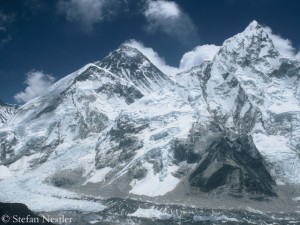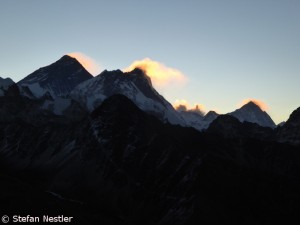The real blind on Everest are the inexperienced
The Nepalese government has triggered a medial avalanche. A week ago, Tourism Minister Kripasur Sherpa mentioned the possibility of stricter rules on granting permits for Mount Everest. The government is considering age limits – from 18 to 75 years – and a reduction of permits for disabled climbers. “The disabled or visually impaired people usually need someone to carry them, which is not an adventure”, Sherpa said. “Only those who can go on their own will be given permission.” The American Erik Weihenmayer, in 2001 the first blind person ever to climb Mount Everest, is outraged. The statement is an overreaction that represents the biases, prejudices and superstition that are very prevalent in Nepal government, Erik writes on Facebook: “It’s a shame that the Minister of Tourism is using the tragedies of the last two years to scapegoat the tiny number of disabled climbers and enact a policy that won’t fix the problem. Frankly, being faced with additional challenges, disability, age, etc. forces a climber to be more prepared and make more cautious decisions.”
First Kibi, then Everest
The blind Austrian climber Andy Holzer agrees. “I think very few climbers on Everest are prepared so exactly for their very special challenge Everest as the disabled adventurers with their personal teams are or need to be”, the 49-year-old writes to me. “The real problem is more the climbers who put on their crampons for the first time on Everest and are quite surprised about it.” In spring 2014, Andy was on the Nepalese south side and this year on the Tibetan north side of Everest trying to climb the highest mountain on earth. But both times he returned home empty-handed: in 2014 because of the avalanche incident in the Khumbu Icefall, in 2015 due to the consequences of the 25 April earthquake. Last year in Nepal, he met Everest aspirants who proudly proclaimed that they had already climbed Mount Kilimanjaro and Everest would now be their second of the Seven Summits, says Andy: “Such facts rather make me wonder. Considering this, I can also understand that not everyone at any time should go to Everest.”
Competence should decide
The New Zealander Mark Inglis, who was in 2006 the first ever double leg amputee to reach the summit of Mount Everest takes the same line. “I think if you have a look at the analysis of the data over the years it’s not the disabled or the elderly perhaps that are the problem but it’s the inexperienced”, Mark told the Canadian broadcaster CBC. “It’s about a person’s competence on the mountain and that’s the thing that we really need to get sorted.” He assured that no one had carried him up Mount Everest: “To suggest that all disabled need to be carried up is completely wrong and the only people that should be going there should be people that can do it under their own steam.”









